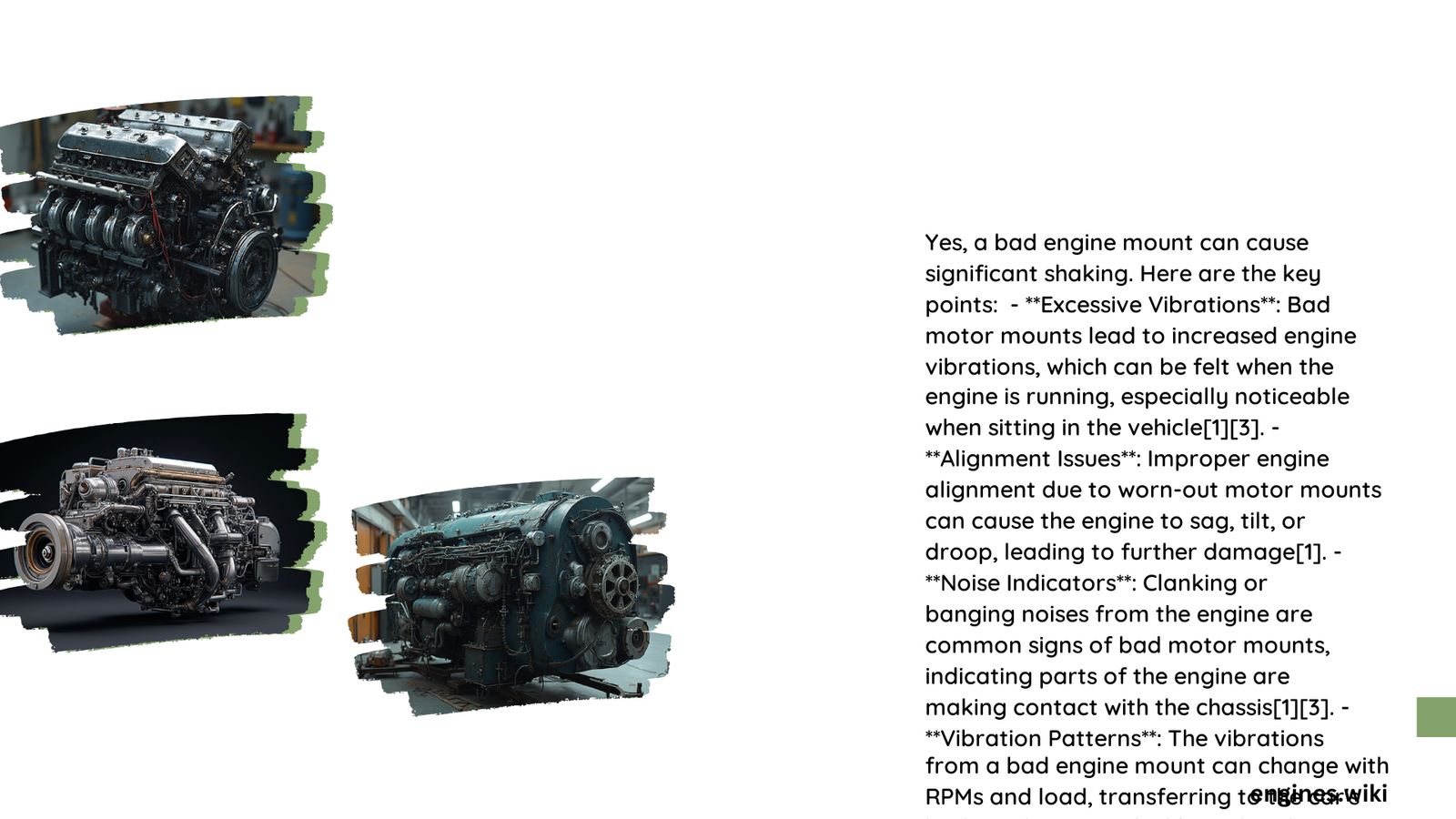Engine mounts play a critical role in stabilizing your vehicle’s powertrain, and when they deteriorate, they can absolutely cause noticeable shaking throughout your car. Worn or damaged engine mounts fail to effectively dampen engine vibrations, leading to increased mechanical movement, potential component stress, and uncomfortable driving experiences that can compromise both vehicle performance and driver safety.
What Causes Engine Mount Shaking?
Engine mounts are rubber or hydraulic components designed to secure the engine to the vehicle’s frame while absorbing vibrations and preventing excessive movement. When these mounts wear out, they lose their ability to stabilize the engine, resulting in several distinct symptoms:
How Do Worn Engine Mounts Create Vibrations?
- Structural Breakdown
- Rubber components crack and degrade
- Hydraulic fluid leaks
-
Mounting points become loose
-
Vibration Transmission
- Increased engine movement
- Direct transfer of mechanical energy
- Reduced shock absorption capabilities
What Are the Primary Symptoms of Failing Engine Mounts?
| Symptom | Description | Severity |
|---|---|---|
| Excessive Vibration | Noticeable shaking during idle and acceleration | High |
| Unusual Engine Movement | Engine appears to shift or lean during driving | Medium |
| Impact Noises | Clunking sounds when changing gears or accelerating | High |
| Visible Wear | Cracked or deteriorated mounting rubber | Critical |
How Can You Diagnose Engine Mount Problems?

Diagnosing engine mount issues requires careful observation and potentially professional inspection. Key diagnostic steps include:
- Visual Inspection
- Check for visible cracks in rubber mounts
- Look for signs of fluid leakage
-
Examine mounting points for corrosion or damage
-
Physical Assessment
- Observe engine movement during acceleration
- Listen for unusual sounds
- Feel for excessive vibrations through steering wheel and seats
What Happens If Engine Mounts Are Not Replaced?
Neglecting worn engine mounts can lead to significant consequences:
- Increased wear on transmission components
- Potential damage to surrounding electrical systems
- Reduced overall vehicle performance
- Higher risk of catastrophic mechanical failure
When Should You Replace Engine Mounts?
Professional mechanics recommend replacement when:
– Vibrations become consistently noticeable
– Visible physical damage is present
– Vehicle is approaching 50,000-70,000 miles
– Unusual noises accompany engine operation
Cost Considerations
The average engine mount replacement typically ranges between $200-$600, depending on:
– Vehicle make and model
– Number of mounts requiring replacement
– Labor rates in your region
Expert Recommendations
- Conduct regular visual inspections
- Address vibration issues promptly
- Use high-quality replacement mounts
- Consider professional diagnostic services
Pro Tip: Modern vehicles often use hydraulic or electronic engine mounts with more complex designs, requiring specialized diagnostic equipment for accurate assessment.
Conclusion
Understanding the relationship between engine mounts and vehicle shaking is crucial for maintaining your car’s performance and preventing potential long-term damage. Regular maintenance and timely replacement can save significant repair costs and ensure a smooth, safe driving experience.
Reference:
– GMTRubber: Engine Mount Symptoms
– Firestone Complete Auto Care: Motor Mount Guide
– Automotive Maintenance Resources
